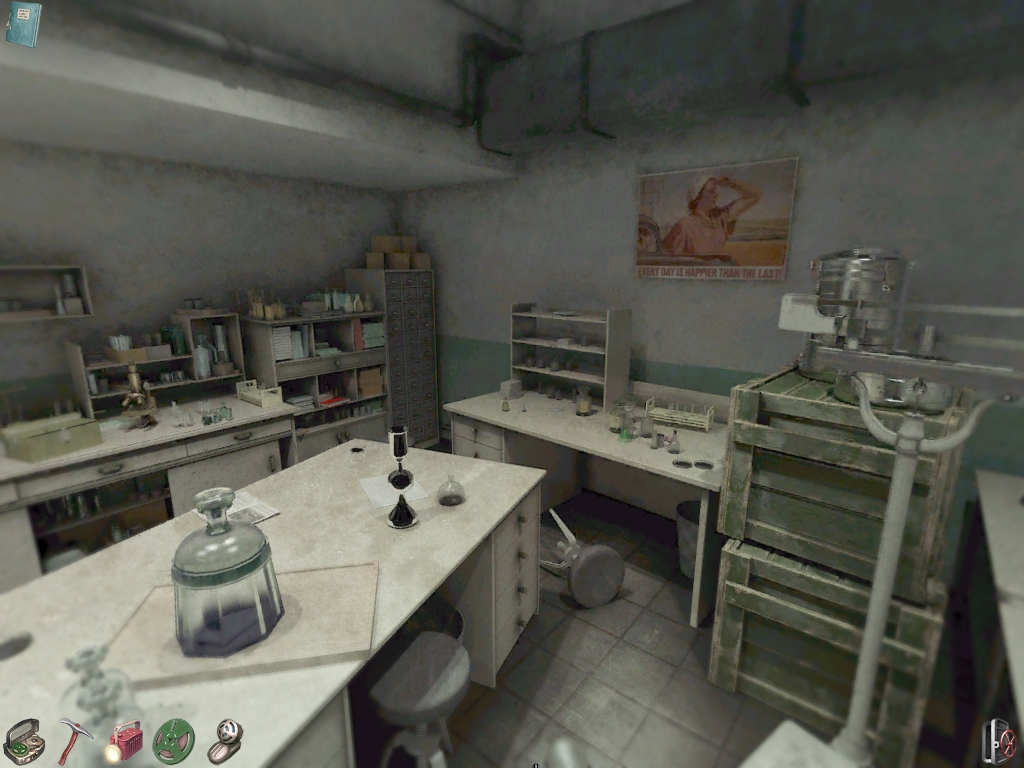There were many unusual and bizarre experiments by various
nations in the early 20th century, many may know of Germany’s
experiments with the supernatural as highlighted by games such as Wolfenstein.
Seeking an edge over the enemy, these experiments ranged from EMP devices to
spirit warfare and genetic mutation. 1953 – KGB Unleashed is set around
supposed experiments during the escalating Cold War.
Warning! Spoilers
ahead! But you already knew that.
Although I couldn’t find much genuine information about the
experiments, the game is set around a supposed series of real-life experiments
conducted by Russian scientists during the 1950’s into the power of telekinesis
and ‘spirits’. True or not, the oppressive and cruel nature of these
experiments are revealed through various documents.
KGB Unleased is a first-person point-and-click adventure
puzzle. Waking up alone in a room with no memory of how you got there, you must
find your way out of the strangely deserted underground bunker. It’s the usual
‘amnesiac’ start, but it plays its part to the story well enough. You haven’t
forgotten who you are, Gleb Ivanovich Nikolayev, a mechanic/engineer sent to
the bunker to repair equipment within the facility. The rest of the details are
hazy, but a few memories flicker back as you progress through the bunker.
I’ll be honest, I’m not the biggest fan of point-and-click
games, but I do enjoy them on occasion. In KGB Unleashed it’s the usual journey
of solving various puzzles and figuring out the meaning of various objects in
each room. This game features more of the latter rather than the former. More
often than not, I struggled to progress due to the obscurity of some elements,
and despite the fact that I agree with the logic of each puzzle and the idea
behind it, I believe it could have been far better designed. Many elements were
misleading, or failed to emphasise the reason for its use. There are several
examples I could give, one of which was a simple switch in a safe which gave no
indication of what it did, yet it unlocked a door in another corridor that I
did not realise until I had backtracked through most of the game to try and
discover its purpose. In another part of the game, you have to descend a trap
hole and there is a crate in the hole. Your cursor highlights to indicate there
is something you need to do with the crate, but while I spent almost 10 minutes
trying to open it, turns out it was actually where you had to put the tape
recorder. Confusion like this could have been easily avoided by making the
object anything other than a crate; a
crate I had to break open not two rooms before.
I almost quit outright in frustration upon the first 10
minutes of starting the game. I don’t know if it was just my settings, but the
initial two rooms are dark, so you have to strain your eyes to hardly see
anything and the incessant alarm tone became annoying and headache inducing
very quickly, beating the puzzles to the punch. The game significantly lacks any
Russian undertones, with the main character voiced with an English accent.
Aside from some radio stations and a few scraps of propaganda, the game could
be set in the USA or England
and you wouldn’t notice any difference.
The ending became downright bizarre, ending very abruptly
with little resolution. In the last area, you find a glass (hopefully) eyeball
which you roll under a door. You can then look through the eyeball as if by
magic and somehow that opens the door. Now here is a big spoiler for you, but
the game stops, tells you that guy who has been talking to you is dead and then
shoos you out the exit. The exit, by the way, is a subway tunnel that somehow goes directly into a bathroom
and the wall just disappears after you pick up a subway token. It almost seems
as though the developers gave up at this point, or just didn’t know how to end
the game. It was an abrupt and confusing ending that severely jarred the
experience.
Aside from me failing at puzzles, the game also failed on
technical levels in many places. It’s very
slow to load, which is very unusual for my high-end PC. It could take as
long as ten seconds to load one room, yet I can load Fallout New Vegas with 50+
mods faster. It only had to do this once per room though, which reduced the
annoyance, but it’s still unusual for a game of this era. I also had trouble
with sluggish cutscenes that left me locked in the cutscene long after the
dialouge ceased. There was also no option for subtitles, which was a bit
problem for me when there was poor audio quality dialogue and I couldn’t
understand what was said, making me miss what may have been important plot
points.
The game looked decent, and the mood was set as it should
have been, but it felt empty and void of any character. With constant
backtracking to and from rooms, I tired from walking the same slow corridors
over and over. It became a grind and that’s no fun at all.
An engine that just isn’t up to scratch, inconsistent
gameplay and design ruined this game, which showed great potential. Some may
enjoy the puzzles, I know some people who will get more satisfaction from games
such as these than I do, but the price, the length of only a mere 2 or 3 hours
coupled with all the letdowns made KGB Unleashed a great disappointment.
And where was all the Vodka? You can't have Russians without Vodka!









